External Beam Radiation Therapy
Brachytherapy
Systemic Radiation Therapy
Stereotactic Radiosurgery
Breast Cancer
Prostate Cancer
Lung Cancer
Brain Cancer
Head and Neck Cancer
Hospitals
Outpatient Clinics
Cancer Research Institutes
Ambulatory Surgery Centers
Linear Accelerators
Radioisotopes
Particle Therapy
Tomotherapy
North America
Europe
South America
Asia Pacific
Middle East and Africa
North America Outlook (USD Billion, 2019-2035)
North America Radiation Oncology Market by Treatment Type
External Beam Radiation Therapy
Brachytherapy
Systemic Radiation Therapy
Stereotactic Radiosurgery
North America Radiation Oncology Market by Application Type
Breast Cancer
Prostate Cancer
Lung Cancer
Brain Cancer
Head and Neck Cancer
North America Radiation Oncology Market by End User Type
Hospitals
Outpatient Clinics
Cancer Research Institutes
Ambulatory Surgery Centers
North America Radiation Oncology Market by Technology Type
Linear Accelerators
Radioisotopes
Particle Therapy
Tomotherapy
North America Radiation Oncology Market by Regional Type
US
Canada
US Outlook (USD Billion, 2019-2035)
US Radiation Oncology Market by Treatment Type
External Beam Radiation Therapy
Brachytherapy
Systemic Radiation Therapy
Stereotactic Radiosurgery
US Radiation Oncology Market by Application Type
Breast Cancer
Prostate Cancer
Lung Cancer
Brain Cancer
Head and Neck Cancer
US Radiation Oncology Market by End User Type
Hospitals
Outpatient Clinics
Cancer Research Institutes
Ambulatory Surgery Centers
US Radiation Oncology Market by Technology Type
Linear Accelerators
Radioisotopes
Particle Therapy
Tomotherapy
CANADA Outlook (USD Billion, 2019-2035)
CANADA Radiation Oncology Market by Treatment Type
External Beam Radiation Therapy
Brachytherapy
Systemic Radiation Therapy
Stereotactic Radiosurgery
CANADA Radiation Oncology Market by Application Type
Breast Cancer
Prostate Cancer
Lung Cancer
Brain Cancer
Head and Neck Cancer
CANADA Radiation Oncology Market by End User Type
Hospitals
Outpatient Clinics
Cancer Research Institutes
Ambulatory Surgery Centers
CANADA Radiation Oncology Market by Technology Type
Linear Accelerators
Radioisotopes
Particle Therapy
Tomotherapy
Europe Outlook (USD Billion, 2019-2035)
Europe Radiation Oncology Market by Treatment Type
External Beam Radiation Therapy
Brachytherapy
Systemic Radiation Therapy
Stereotactic Radiosurgery
Europe Radiation Oncology Market by Application Type
Breast Cancer
Prostate Cancer
Lung Cancer
Brain Cancer
Head and Neck Cancer
Europe Radiation Oncology Market by End User Type
Hospitals
Outpatient Clinics
Cancer Research Institutes
Ambulatory Surgery Centers
Europe Radiation Oncology Market by Technology Type
Linear Accelerators
Radioisotopes
Particle Therapy
Tomotherapy
Europe Radiation Oncology Market by Regional Type
Germany
UK
France
Russia
Italy
Spain
Rest of Europe
GERMANY Outlook (USD Billion, 2019-2035)
GERMANY Radiation Oncology Market by Treatment Type
External Beam Radiation Therapy
Brachytherapy
Systemic Radiation Therapy
Stereotactic Radiosurgery
GERMANY Radiation Oncology Market by Application Type
Breast Cancer
Prostate Cancer
Lung Cancer
Brain Cancer
Head and Neck Cancer
GERMANY Radiation Oncology Market by End User Type
Hospitals
Outpatient Clinics
Cancer Research Institutes
Ambulatory Surgery Centers
GERMANY Radiation Oncology Market by Technology Type
Linear Accelerators
Radioisotopes
Particle Therapy
Tomotherapy
UK Outlook (USD Billion, 2019-2035)
UK Radiation Oncology Market by Treatment Type
External Beam Radiation Therapy
Brachytherapy
Systemic Radiation Therapy
Stereotactic Radiosurgery
UK Radiation Oncology Market by Application Type
Breast Cancer
Prostate Cancer
Lung Cancer
Brain Cancer
Head and Neck Cancer
UK Radiation Oncology Market by End User Type
Hospitals
Outpatient Clinics
Cancer Research Institutes
Ambulatory Surgery Centers
UK Radiation Oncology Market by Technology Type
Linear Accelerators
Radioisotopes
Particle Therapy
Tomotherapy
FRANCE Outlook (USD Billion, 2019-2035)
FRANCE Radiation Oncology Market by Treatment Type
External Beam Radiation Therapy
Brachytherapy
Systemic Radiation Therapy
Stereotactic Radiosurgery
FRANCE Radiation Oncology Market by Application Type
Breast Cancer
Prostate Cancer
Lung Cancer
Brain Cancer
Head and Neck Cancer
FRANCE Radiation Oncology Market by End User Type
Hospitals
Outpatient Clinics
Cancer Research Institutes
Ambulatory Surgery Centers
FRANCE Radiation Oncology Market by Technology Type
Linear Accelerators
Radioisotopes
Particle Therapy
Tomotherapy
RUSSIA Outlook (USD Billion, 2019-2035)
RUSSIA Radiation Oncology Market by Treatment Type
External Beam Radiation Therapy
Brachytherapy
Systemic Radiation Therapy
Stereotactic Radiosurgery
RUSSIA Radiation Oncology Market by Application Type
Breast Cancer
Prostate Cancer
Lung Cancer
Brain Cancer
Head and Neck Cancer
RUSSIA Radiation Oncology Market by End User Type
Hospitals
Outpatient Clinics
Cancer Research Institutes
Ambulatory Surgery Centers
RUSSIA Radiation Oncology Market by Technology Type
Linear Accelerators
Radioisotopes
Particle Therapy
Tomotherapy
ITALY Outlook (USD Billion, 2019-2035)
ITALY Radiation Oncology Market by Treatment Type
External Beam Radiation Therapy
Brachytherapy
Systemic Radiation Therapy
Stereotactic Radiosurgery
ITALY Radiation Oncology Market by Application Type
Breast Cancer
Prostate Cancer
Lung Cancer
Brain Cancer
Head and Neck Cancer
ITALY Radiation Oncology Market by End User Type
Hospitals
Outpatient Clinics
Cancer Research Institutes
Ambulatory Surgery Centers
ITALY Radiation Oncology Market by Technology Type
Linear Accelerators
Radioisotopes
Particle Therapy
Tomotherapy
SPAIN Outlook (USD Billion, 2019-2035)
SPAIN Radiation Oncology Market by Treatment Type
External Beam Radiation Therapy
Brachytherapy
Systemic Radiation Therapy
Stereotactic Radiosurgery
SPAIN Radiation Oncology Market by Application Type
Breast Cancer
Prostate Cancer
Lung Cancer
Brain Cancer
Head and Neck Cancer
SPAIN Radiation Oncology Market by End User Type
Hospitals
Outpatient Clinics
Cancer Research Institutes
Ambulatory Surgery Centers
SPAIN Radiation Oncology Market by Technology Type
Linear Accelerators
Radioisotopes
Particle Therapy
Tomotherapy
REST OF EUROPE Outlook (USD Billion, 2019-2035)
REST OF EUROPE Radiation Oncology Market by Treatment Type
External Beam Radiation Therapy
Brachytherapy
Systemic Radiation Therapy
Stereotactic Radiosurgery
REST OF EUROPE Radiation Oncology Market by Application Type
Breast Cancer
Prostate Cancer
Lung Cancer
Brain Cancer
Head and Neck Cancer
REST OF EUROPE Radiation Oncology Market by End User Type
Hospitals
Outpatient Clinics
Cancer Research Institutes
Ambulatory Surgery Centers
REST OF EUROPE Radiation Oncology Market by Technology Type
Linear Accelerators
Radioisotopes
Particle Therapy
Tomotherapy
APAC Outlook (USD Billion, 2019-2035)
APAC Radiation Oncology Market by Treatment Type
External Beam Radiation Therapy
Brachytherapy
Systemic Radiation Therapy
Stereotactic Radiosurgery
APAC Radiation Oncology Market by Application Type
Breast Cancer
Prostate Cancer
Lung Cancer
Brain Cancer
Head and Neck Cancer
APAC Radiation Oncology Market by End User Type
Hospitals
Outpatient Clinics
Cancer Research Institutes
Ambulatory Surgery Centers
APAC Radiation Oncology Market by Technology Type
Linear Accelerators
Radioisotopes
Particle Therapy
Tomotherapy
APAC Radiation Oncology Market by Regional Type
China
India
Japan
South Korea
Malaysia
Thailand
Indonesia
Rest of APAC
CHINA Outlook (USD Billion, 2019-2035)
CHINA Radiation Oncology Market by Treatment Type
External Beam Radiation Therapy
Brachytherapy
Systemic Radiation Therapy
Stereotactic Radiosurgery
CHINA Radiation Oncology Market by Application Type
Breast Cancer
Prostate Cancer
Lung Cancer
Brain Cancer
Head and Neck Cancer
CHINA Radiation Oncology Market by End User Type
Hospitals
Outpatient Clinics
Cancer Research Institutes
Ambulatory Surgery Centers
CHINA Radiation Oncology Market by Technology Type
Linear Accelerators
Radioisotopes
Particle Therapy
Tomotherapy
INDIA Outlook (USD Billion, 2019-2035)
INDIA Radiation Oncology Market by Treatment Type
External Beam Radiation Therapy
Brachytherapy
Systemic Radiation Therapy
Stereotactic Radiosurgery
INDIA Radiation Oncology Market by Application Type
Breast Cancer
Prostate Cancer
Lung Cancer
Brain Cancer
Head and Neck Cancer
INDIA Radiation Oncology Market by End User Type
Hospitals
Outpatient Clinics
Cancer Research Institutes
Ambulatory Surgery Centers
INDIA Radiation Oncology Market by Technology Type
Linear Accelerators
Radioisotopes
Particle Therapy
Tomotherapy
JAPAN Outlook (USD Billion, 2019-2035)
JAPAN Radiation Oncology Market by Treatment Type
External Beam Radiation Therapy
Brachytherapy
Systemic Radiation Therapy
Stereotactic Radiosurgery
JAPAN Radiation Oncology Market by Application Type
Breast Cancer
Prostate Cancer
Lung Cancer
Brain Cancer
Head and Neck Cancer
JAPAN Radiation Oncology Market by End User Type
Hospitals
Outpatient Clinics
Cancer Research Institutes
Ambulatory Surgery Centers
JAPAN Radiation Oncology Market by Technology Type
Linear Accelerators
Radioisotopes
Particle Therapy
Tomotherapy
SOUTH KOREA Outlook (USD Billion, 2019-2035)
SOUTH KOREA Radiation Oncology Market by Treatment Type
External Beam Radiation Therapy
Brachytherapy
Systemic Radiation Therapy
Stereotactic Radiosurgery
SOUTH KOREA Radiation Oncology Market by Application Type
Breast Cancer
Prostate Cancer
Lung Cancer
Brain Cancer
Head and Neck Cancer
SOUTH KOREA Radiation Oncology Market by End User Type
Hospitals
Outpatient Clinics
Cancer Research Institutes
Ambulatory Surgery Centers
SOUTH KOREA Radiation Oncology Market by Technology Type
Linear Accelerators
Radioisotopes
Particle Therapy
Tomotherapy
MALAYSIA Outlook (USD Billion, 2019-2035)
MALAYSIA Radiation Oncology Market by Treatment Type
External Beam Radiation Therapy
Brachytherapy
Systemic Radiation Therapy
Stereotactic Radiosurgery
MALAYSIA Radiation Oncology Market by Application Type
Breast Cancer
Prostate Cancer
Lung Cancer
Brain Cancer
Head and Neck Cancer
MALAYSIA Radiation Oncology Market by End User Type
Hospitals
Outpatient Clinics
Cancer Research Institutes
Ambulatory Surgery Centers
MALAYSIA Radiation Oncology Market by Technology Type
Linear Accelerators
Radioisotopes
Particle Therapy
Tomotherapy
THAILAND Outlook (USD Billion, 2019-2035)
THAILAND Radiation Oncology Market by Treatment Type
External Beam Radiation Therapy
Brachytherapy
Systemic Radiation Therapy
Stereotactic Radiosurgery
THAILAND Radiation Oncology Market by Application Type
Breast Cancer
Prostate Cancer
Lung Cancer
Brain Cancer
Head and Neck Cancer
THAILAND Radiation Oncology Market by End User Type
Hospitals
Outpatient Clinics
Cancer Research Institutes
Ambulatory Surgery Centers
THAILAND Radiation Oncology Market by Technology Type
Linear Accelerators
Radioisotopes
Particle Therapy
Tomotherapy
INDONESIA Outlook (USD Billion, 2019-2035)
INDONESIA Radiation Oncology Market by Treatment Type
External Beam Radiation Therapy
Brachytherapy
Systemic Radiation Therapy
Stereotactic Radiosurgery
INDONESIA Radiation Oncology Market by Application Type
Breast Cancer
Prostate Cancer
Lung Cancer
Brain Cancer
Head and Neck Cancer
INDONESIA Radiation Oncology Market by End User Type
Hospitals
Outpatient Clinics
Cancer Research Institutes
Ambulatory Surgery Centers
INDONESIA Radiation Oncology Market by Technology Type
Linear Accelerators
Radioisotopes
Particle Therapy
Tomotherapy
REST OF APAC Outlook (USD Billion, 2019-2035)
REST OF APAC Radiation Oncology Market by Treatment Type
External Beam Radiation Therapy
Brachytherapy
Systemic Radiation Therapy
Stereotactic Radiosurgery
REST OF APAC Radiation Oncology Market by Application Type
Breast Cancer
Prostate Cancer
Lung Cancer
Brain Cancer
Head and Neck Cancer
REST OF APAC Radiation Oncology Market by End User Type
Hospitals
Outpatient Clinics
Cancer Research Institutes
Ambulatory Surgery Centers
REST OF APAC Radiation Oncology Market by Technology Type
Linear Accelerators
Radioisotopes
Particle Therapy
Tomotherapy
South America Outlook (USD Billion, 2019-2035)
South America Radiation Oncology Market by Treatment Type
External Beam Radiation Therapy
Brachytherapy
Systemic Radiation Therapy
Stereotactic Radiosurgery
South America Radiation Oncology Market by Application Type
Breast Cancer
Prostate Cancer
Lung Cancer
Brain Cancer
Head and Neck Cancer
South America Radiation Oncology Market by End User Type
Hospitals
Outpatient Clinics
Cancer Research Institutes
Ambulatory Surgery Centers
South America Radiation Oncology Market by Technology Type
Linear Accelerators
Radioisotopes
Particle Therapy
Tomotherapy
South America Radiation Oncology Market by Regional Type
Brazil
Mexico
Argentina
Rest of South America
BRAZIL Outlook (USD Billion, 2019-2035)
BRAZIL Radiation Oncology Market by Treatment Type
External Beam Radiation Therapy
Brachytherapy
Systemic Radiation Therapy
Stereotactic Radiosurgery
BRAZIL Radiation Oncology Market by Application Type
Breast Cancer
Prostate Cancer
Lung Cancer
Brain Cancer
Head and Neck Cancer
BRAZIL Radiation Oncology Market by End User Type
Hospitals
Outpatient Clinics
Cancer Research Institutes
Ambulatory Surgery Centers
BRAZIL Radiation Oncology Market by Technology Type
Linear Accelerators
Radioisotopes
Particle Therapy
Tomotherapy
MEXICO Outlook (USD Billion, 2019-2035)
MEXICO Radiation Oncology Market by Treatment Type
External Beam Radiation Therapy
Brachytherapy
Systemic Radiation Therapy
Stereotactic Radiosurgery
MEXICO Radiation Oncology Market by Application Type
Breast Cancer
Prostate Cancer
Lung Cancer
Brain Cancer
Head and Neck Cancer
MEXICO Radiation Oncology Market by End User Type
Hospitals
Outpatient Clinics
Cancer Research Institutes
Ambulatory Surgery Centers
MEXICO Radiation Oncology Market by Technology Type
Linear Accelerators
Radioisotopes
Particle Therapy
Tomotherapy
ARGENTINA Outlook (USD Billion, 2019-2035)
ARGENTINA Radiation Oncology Market by Treatment Type
External Beam Radiation Therapy
Brachytherapy
Systemic Radiation Therapy
Stereotactic Radiosurgery
ARGENTINA Radiation Oncology Market by Application Type
Breast Cancer
Prostate Cancer
Lung Cancer
Brain Cancer
Head and Neck Cancer
ARGENTINA Radiation Oncology Market by End User Type
Hospitals
Outpatient Clinics
Cancer Research Institutes
Ambulatory Surgery Centers
ARGENTINA Radiation Oncology Market by Technology Type
Linear Accelerators
Radioisotopes
Particle Therapy
Tomotherapy
REST OF SOUTH AMERICA Outlook (USD Billion, 2019-2035)
REST OF SOUTH AMERICA Radiation Oncology Market by Treatment Type
External Beam Radiation Therapy
Brachytherapy
Systemic Radiation Therapy
Stereotactic Radiosurgery
REST OF SOUTH AMERICA Radiation Oncology Market by Application Type
Breast Cancer
Prostate Cancer
Lung Cancer
Brain Cancer
Head and Neck Cancer
REST OF SOUTH AMERICA Radiation Oncology Market by End User Type
Hospitals
Outpatient Clinics
Cancer Research Institutes
Ambulatory Surgery Centers
REST OF SOUTH AMERICA Radiation Oncology Market by Technology Type
Linear Accelerators
Radioisotopes
Particle Therapy
Tomotherapy
MEA Outlook (USD Billion, 2019-2035)
MEA Radiation Oncology Market by Treatment Type
External Beam Radiation Therapy
Brachytherapy
Systemic Radiation Therapy
Stereotactic Radiosurgery
MEA Radiation Oncology Market by Application Type
Breast Cancer
Prostate Cancer
Lung Cancer
Brain Cancer
Head and Neck Cancer
MEA Radiation Oncology Market by End User Type
Hospitals
Outpatient Clinics
Cancer Research Institutes
Ambulatory Surgery Centers
MEA Radiation Oncology Market by Technology Type
Linear Accelerators
Radioisotopes
Particle Therapy
Tomotherapy
MEA Radiation Oncology Market by Regional Type
GCC Countries
South Africa
Rest of MEA
GCC COUNTRIES Outlook (USD Billion, 2019-2035)
GCC COUNTRIES Radiation Oncology Market by Treatment Type
External Beam Radiation Therapy
Brachytherapy
Systemic Radiation Therapy
Stereotactic Radiosurgery
GCC COUNTRIES Radiation Oncology Market by Application Type
Breast Cancer
Prostate Cancer
Lung Cancer
Brain Cancer
Head and Neck Cancer
GCC COUNTRIES Radiation Oncology Market by End User Type
Hospitals
Outpatient Clinics
Cancer Research Institutes
Ambulatory Surgery Centers
GCC COUNTRIES Radiation Oncology Market by Technology Type
Linear Accelerators
Radioisotopes
Particle Therapy
Tomotherapy
SOUTH AFRICA Outlook (USD Billion, 2019-2035)
SOUTH AFRICA Radiation Oncology Market by Treatment Type
External Beam Radiation Therapy
Brachytherapy
Systemic Radiation Therapy
Stereotactic Radiosurgery
SOUTH AFRICA Radiation Oncology Market by Application Type
Breast Cancer
Prostate Cancer
Lung Cancer
Brain Cancer
Head and Neck Cancer
SOUTH AFRICA Radiation Oncology Market by End User Type
Hospitals
Outpatient Clinics
Cancer Research Institutes
Ambulatory Surgery Centers
SOUTH AFRICA Radiation Oncology Market by Technology Type
Linear Accelerators
Radioisotopes
Particle Therapy
Tomotherapy
REST OF MEA Outlook (USD Billion, 2019-2035)
REST OF MEA Radiation Oncology Market by Treatment Type
External Beam Radiation Therapy
Brachytherapy
Systemic Radiation Therapy
Stereotactic Radiosurgery
REST OF MEA Radiation Oncology Market by Application Type
Breast Cancer
Prostate Cancer
Lung Cancer
Brain Cancer
Head and Neck Cancer
REST OF MEA Radiation Oncology Market by End User Type
Hospitals
Outpatient Clinics
Cancer Research Institutes
Ambulatory Surgery Centers
REST OF MEA Radiation Oncology Market by Technology Type
Linear Accelerators
Radioisotopes
Particle Therapy
Tomotherapy

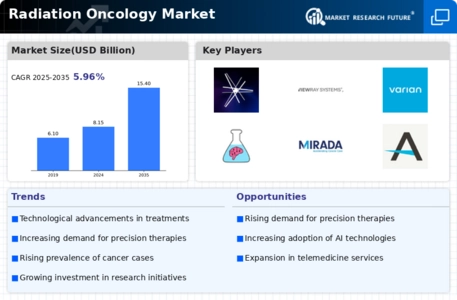
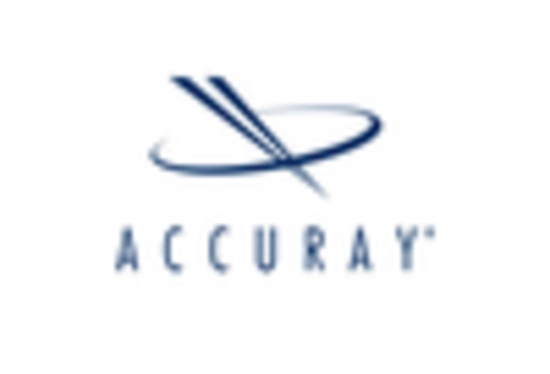
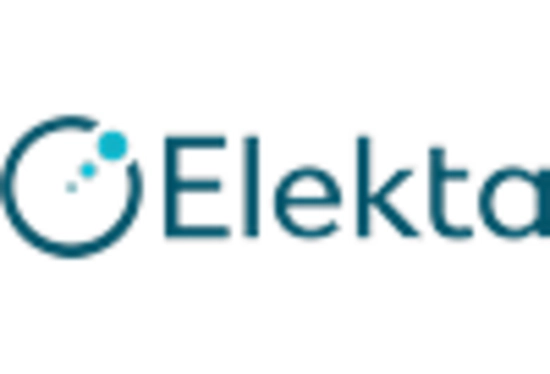
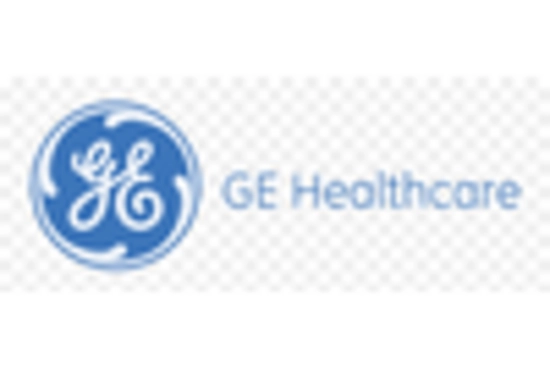
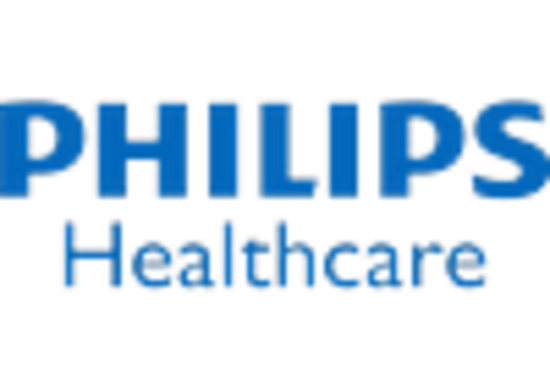
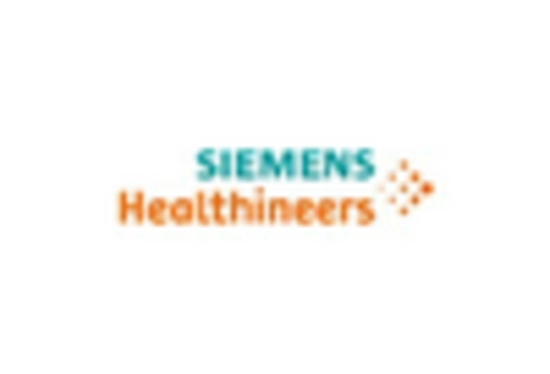
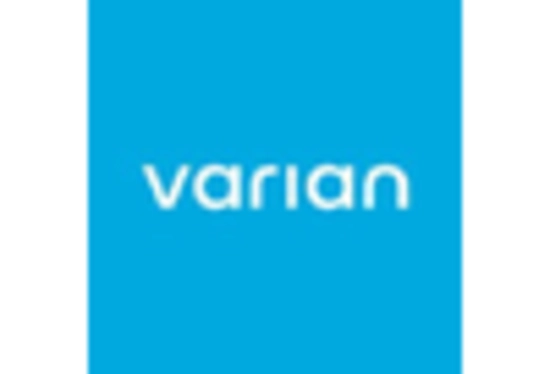

Leave a Comment